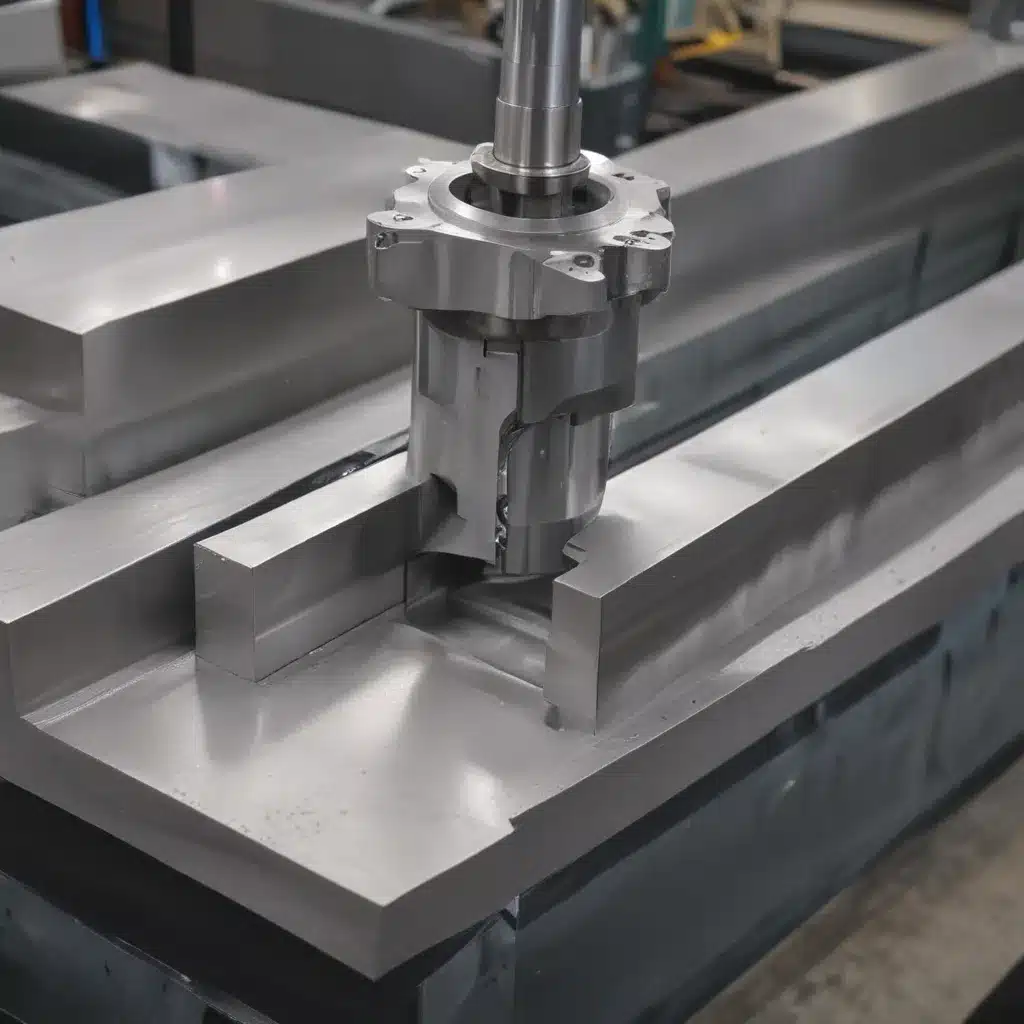
Ah, the wondrous world of metalworking – where the clash of steel, the sizzle of sparks, and the whir of machinery create a symphony of industrial artistry. As a passionate advocate for all things welding, I’ve witnessed firsthand the awe-inspiring advancements that have transformed this ancient craft into a modern marvel. And today, dear reader, I’m thrilled to take you on a journey through the cutting-edge realm of electrohydraulic forming (EHF) – a technology that’s quite literally making metal move in ways you’d never believe.
The Power of Pulses: Introducing Electrohydraulic Forming
Imagine, if you will, a scenario where you can shape and mold metal with the precision of a surgeon and the power of an Olympic weightlifter. That, my friends, is the essence of electrohydraulic forming. It’s a process that harnesses the sheer might of electrical energy, channeling it through a liquid medium to create a pressure pulse so intense that it can transform even the most stubborn of metals.
But how, you ask, does this magical process work? Well, let me break it down for you. At the heart of EHF lies a high-voltage electrical discharge, typically generated by a capacitor bank or a Marx generator. This surge of electricity is then directed into a liquid-filled chamber, where it creates a rapidly expanding shockwave. This shockwave, in turn, transmits its immense force to the metal workpiece, causing it to deform and take on the desired shape.
The Need for Speed: Unlocking the Potential of Rapid Deformation
Now, you might be wondering, “But wait, isn’t there a limit to how much I can shape metal with this method?” Well, my friends, that’s where the true genius of EHF comes into play. You see, the key to unlocking the full potential of this technique lies in the sheer speed of the deformation process.
Imagine, if you will, a scenario where you need to create a complex, intricate part with a tight tolerance – something that would normally require painstaking manual labor or a series of complex stamping operations. With EHF, you can achieve that same level of precision, but in a fraction of the time. The lightning-fast pressure pulse generated by the system can deform the metal at rates exceeding 10,000 meters per second, allowing for the creation of parts that would be virtually impossible to produce using traditional methods.
And the benefits don’t stop there. By harnessing the power of rapid deformation, EHF also allows for the shaping of materials that would otherwise be considered too brittle or difficult to work with. Imagine being able to form high-strength, lightweight alloys into complex, aerodynamic components for the aerospace industry or intricate, load-bearing structures for the automotive sector. It’s a game-changer, my friends, and one that’s truly revolutionizing the world of metalworking.
Unlocking New Possibilities: The Versatility of Electrohydraulic Forming
But the magic of EHF doesn’t end there. Oh no, this technology is a true jack-of-all-trades when it comes to metalworking. From precision welding and custom fabrication to advanced metal cutting and intricate part production, EHF has proven itself to be a veritable Swiss Army knife of the industry.
Take, for example, the world of precision welding. Traditionally, this has been a painstaking process, requiring skilled technicians to carefully control the heat input and metal flow to achieve the perfect weld. But with EHF, we can harness the power of those rapid pressure pulses to create welds with unparalleled strength and consistency, all while minimizing the risk of defects or distortion.
And what about custom fabrication? Ah, now there’s a realm where EHF truly shines. With its ability to quickly and accurately deform metal, this technology allows us to bring the most ambitious design visions to life, creating intricate, one-of-a-kind components that would have been virtually impossible to produce using conventional methods.
But that’s not all, my friends. Electrohydraulic forming also has a hidden superpower when it comes to metal cutting. By utilizing those high-speed pressure pulses, we can slice through even the toughest of alloys with surgical precision, opening up new possibilities for complex part production and streamlining the manufacturing process.
Pushing the Boundaries: The Future of Electrohydraulic Forming
As I sit here, contemplating the incredible capabilities of this transformative technology, I can’t help but wonder – what’s next? Where will the boundaries of electrohydraulic forming be pushed, and what wonders will it uncover?
Perhaps we’ll see the development of even more powerful and efficient EHF systems, capable of deforming metals at speeds that defy the imagination. Or maybe we’ll witness the integration of advanced sensors and control systems, allowing for real-time monitoring and fine-tuning of the forming process, ensuring unparalleled precision and repeatability.
And who knows, maybe one day we’ll even see EHF become a staple in the world of additive manufacturing, allowing us to create truly complex, one-of-a-kind parts with a level of speed and accuracy that would make even the most seasoned 3D printer blush.
The possibilities, my friends, are truly endless. And as a welding enthusiast, I can’t wait to see what the future holds for this incredible technology. So, if you’re ready to unlock the full potential of metalworking, to push the boundaries of what’s possible, then I invite you to join me on this journey of discovery. Let’s dive headfirst into the world of electrohydraulic forming and see where it takes us!
